|
THE CARTRIDGE COLLECTOR'S EXCHANGE |
|
|
|
Home of the Old Ammo Guy's Virtual
Cartridge Trading Table
Picture Page August 2018 Please note: Unless otherwise indicated, the pictures on this web site are my property, and should not be used by anyone without crediting the source. Those 44XL (and 38XL) shot cartridges .... Since I started collecting cartridges, I have had a soft spot for 44XL cartridges, the ones with the colored shot-filled paper sabots. They were intended for an array of inexpensive single shot guns fitted with smooth bore barrels. The guns are usually marked XL on the frame or barrel, and typically have rolling block or dropping block actions. Because the .44XL cartridge is loaded in a .44-40 Winchester case, it will also fit any rifle or revolver chambered for the .44-40 cartridge.
The XL shotguns will be found marked Forehand & Wadsworth, Forehand Arms Company, Hopkins & Allen, Merwin & Hulbert, and
perhaps other company names. This listing from the 1887 Merwin, Hulbert & Company catalog shows their XL shotgun, which was chambered for the .44XL and .38XL cartridges. The photo below is of a Hopkins & Allen .44XL shotgun. It and the one above .
. from the Merwin & Hulbert catalog both have dropping block actions, on which the breechblock slides downward when the lever is operated. . I have an assortment of .44XL boxes in my collection, as shown in the photos below. This first one is a box of Remington-UMC black powder
cartridges dating from about 1913 to 1916. The side-sealing label that wraps around the box indicates on both ends that they are loaded with black powder and No 8 (I think) chilled lead shot. They used a red paper sabot on all of their .44XL cartridges. . .
. . . . . . . . . . . . The photo below is of a Remington-UMC smokeless powder box dating from the same time period as the black powder box above. The black band on the red sabot identifies this cartridge as a smokeless load.
.
. . .
The wrap-around label indicates these cartridges are loaded with number 6 chilled shot. . . . . .
. . . . .
The labels on the Peters Cartridge Company box above indicate that the cartridges were adapted to 'X.L., Stevens and other Shot Guns'. They are loaded with semi-smokeless powder, which typically was a blend of black and smokeless powders. This box probably dates from the mid-1920s. . . .
. . . . . . . . . . This Western Cartridge Company
box contains smokeless loads with
number
8 chilled shot. The green sabots apparently were used for smokeless loads,
while black powder loads would have had red sabots. The box dates from
1927, when non-corrosive priming was introduced by Western in this 'bullseye'
style box, to 1944, when the company name was changed from Western
Cartridge Company to Western Cartridge
. . . . . . . . .
. . . . . . . . . . . . .
Unfortunately, this Dominion Cartridge Company box was empty when I acquired it, so I don't have an original cartridge to include in the photo. The label identifies the cartridges as 44 I.X.L. shot. I am not familiar
with this designation in regards to guns by any of the makers I listed above, or to any other ammunition besides that made by the Dominion Cartridge Company. I do know that I.X.L. (I Excel) was used as a brand name for knives around the turn of the 20th Century, and it may have also been used for hardware store brand shotguns. This box was made between about 1913 and 1927. . .
The end label indicates the cartridges that were originally in the box were loaded with black powder. I suspect a different color label would have been used for smokeless loads. . . . . . . Below is an interesting box of Union Metallic Cartridge Company primed shells. Handwritten on the label is '50 44 X.L.' and on the line beginning 'WITH' is written '# 1 primers'. As expected, shells are simply .44-40 shells with a .44 X.L. headstamp. These ancient-looking two-piece tan boxes with the ancient looking green labels with handwritten .
information tend to have been made later than they would appear to have been. All I can say regarding when this box was made is that it was most likely prior to when the Remington and UMC company names were combined in 1911.
.. This box of .38XL cartridges by the American Metallic Cartridge Company is an oddity; I have seen just one other. The American
Metallic Cartridge Company was formed by Winchester and the Union Metallic Cartridge Company (UMC) in 1891 following their purchase of the assets of the Phoenix Metallic Cartridge Company during that year. This new company continued production in the South Coventry, Connecticut facility of the Phoenix line of ammunition, using the Phoenix machinery.
The cartridges in the box have tan sabots, and have no headstamps. In my 40+ years of collecting cartridges I have never seen a .38XL cartridge with a headstamp. I have not been able to identify to my own satisfaction if an already existing cartridge case was used for the .38 XL cartridge, or if it had it's own unique case. The dimensions of the cartridges from this box are as follows:
sabot - ~0.358" (tend to be mis-shaped, so measuring can be an issue) neck - 0.380" base - 0.381" rim - 0.448" case length - 1.076" overall length - ~1.668" (also difficult to accurately measure)
These measurements are quite close in all dimensions to those of the .38
long Colt except for the case length, which is about .06" longer. However, I
suspect the the barrels of these XL shotguns have no 'step' from the chamber
to the bore; if that is the true then the length of the cartridge case is not a critical factor.
The
end label on this box indicates that it holds '50 SHOT CARTRIDGES FOR X. L. SHOT
GUN, 38 Cal. C. F.' When I first saw this, I thought perhaps that was the
When one of these cartridges is found separated from it's box, I think the tendency would be for it to be 'tentatively' identified in a collection as a shot load of any of several different cartridges, rather than the .38 XL that it actually is.
The September 9, 1878 patent date on the end label of the box refers to the patent for the lead filled paper sabot that was awarded to The Phoenix Metallic Cartridge Company. It is believed that Winchester and UMC purchased Phoenix for the sole purpose of keeping their competitors from acquiring rights to the paper sabot patent, which wasn't due to expire until 1896. In 1898, two years following the expiration of the patent, production at the American Metallic Cartridge Company ceased. This box would therefore date from between 1891 to 1898. . .
. . I've included photos of four
additional .44XL cartridges from my collection including, from the left, an
unheadstamped tan saboted example probably made by the United States Cartridge Company, a
black powder load and and a smokeless load by the Union Metallic Cartridge
Company (UMC), and a black powder load by Winchester (WRACO). The rounded
head of the U. S. Cartridge Co example is a fairly accurate indicator of cartridges made by that company.
The sabots on the two UMC cartridges were originally red, but have faded
somewhat over the years. The small 'U' on the second UMC cartridge is what
identifies it as
. . . . . . Sources: Hopkins & Allen XL shotgun advertisement from 1887 Merwin, Hulbert & Co catalog reprint by Cornell Publications, PO Box 214, Brighton, MI 48116 Hopkins & Allen 44XL from www.gunauction.com, item 9739908, sold June 1, 2010. Information regarding the Phoenix and American Metallic Cartridge Companies, The Rimfire Cartridge in the United States & Canada, 1857 to 1984, John L. Barber, Armory Publications, Tacoma Washington, 1987
.
|



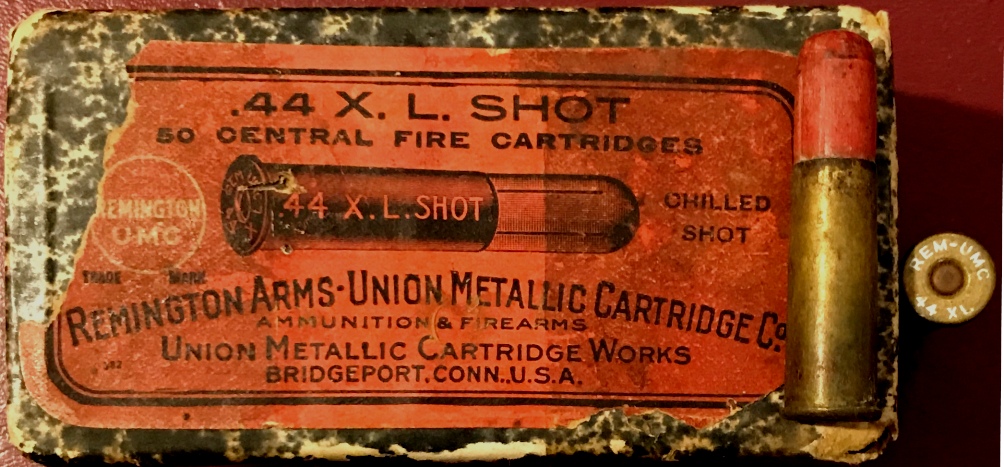
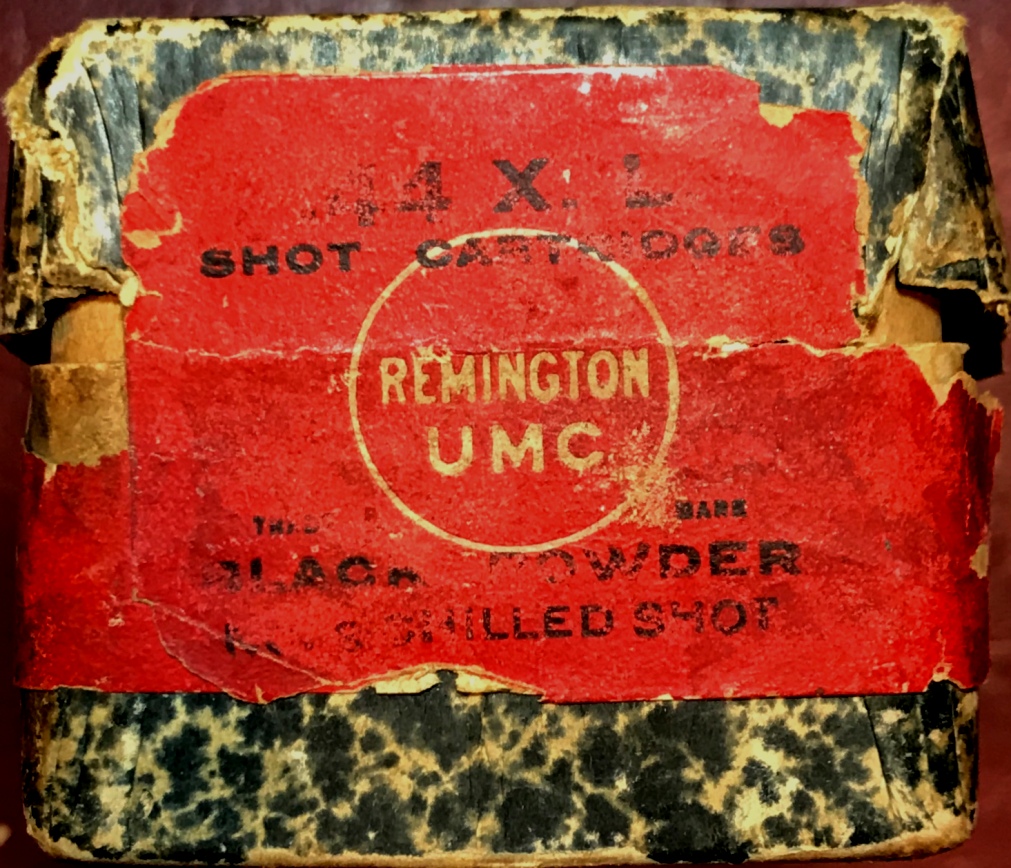
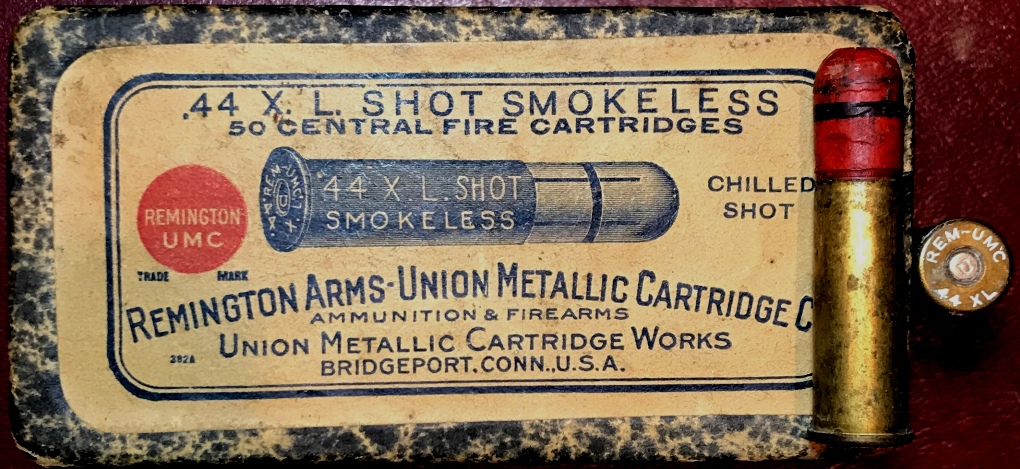
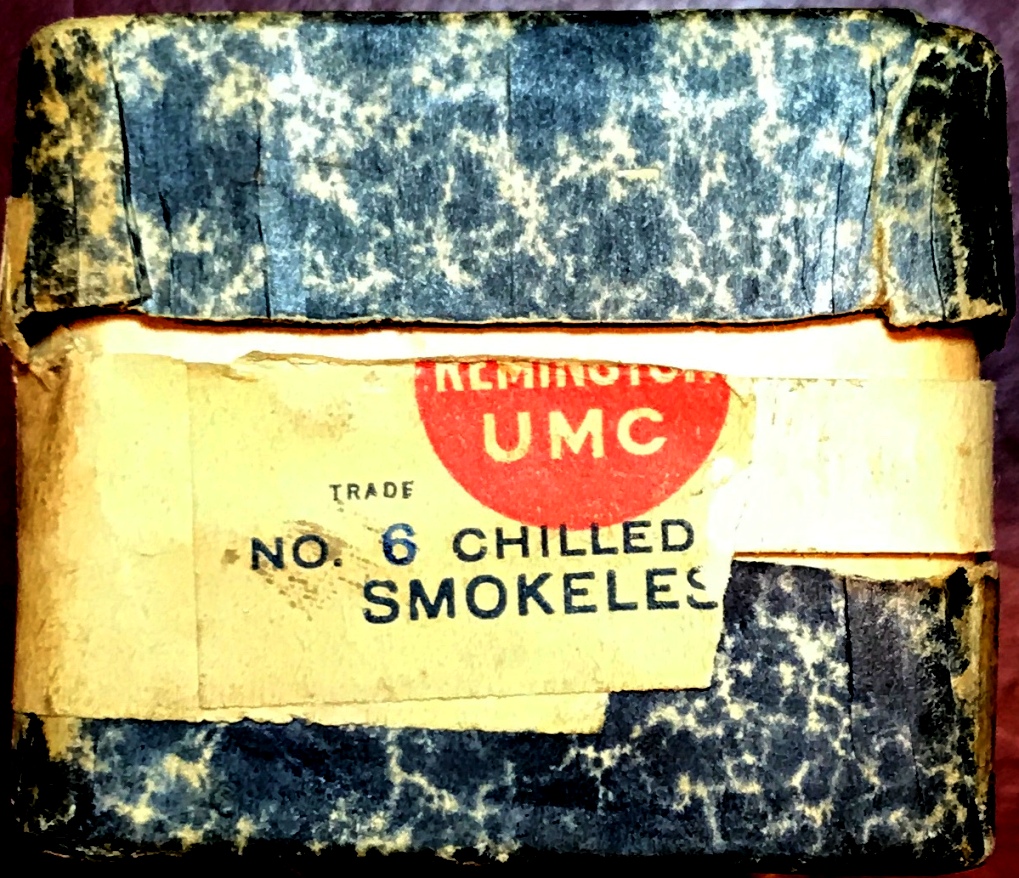
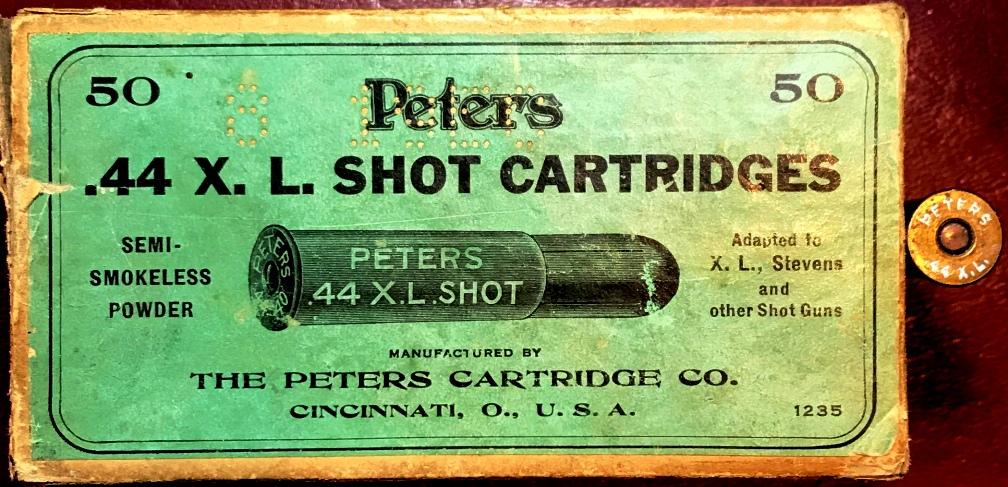
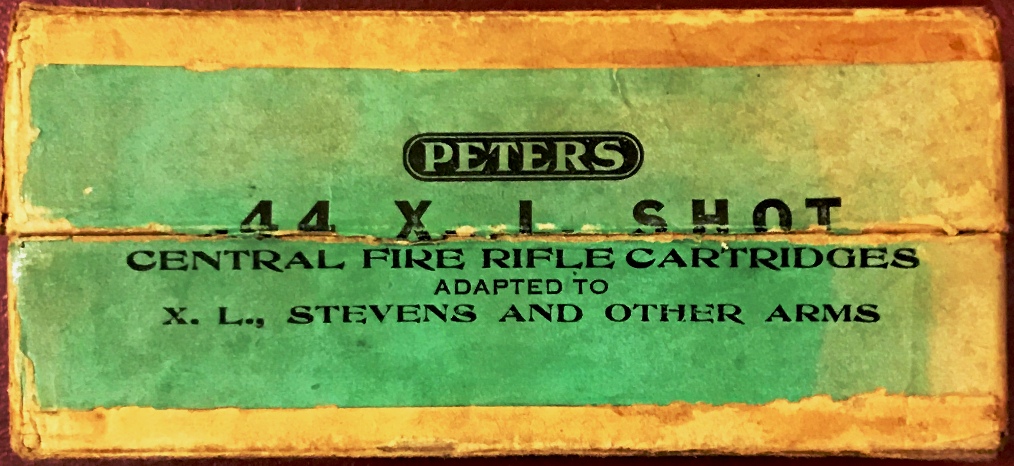
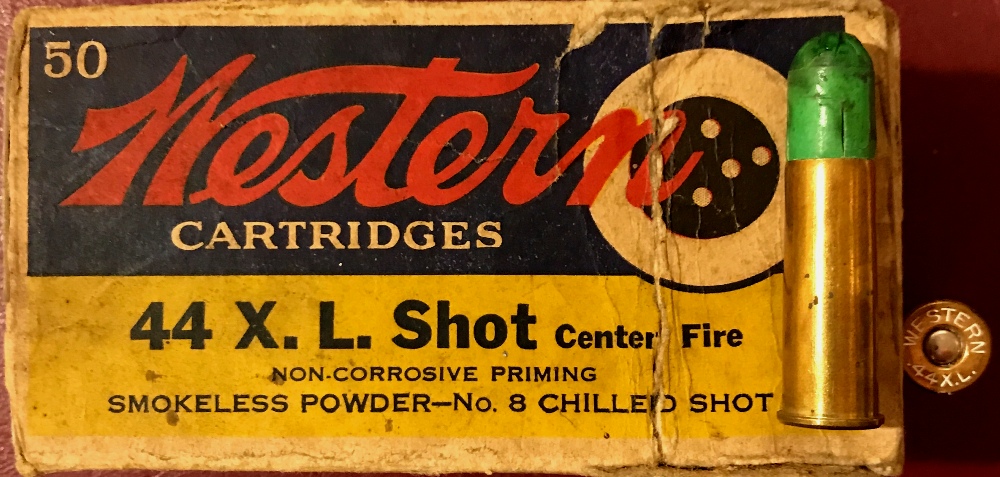
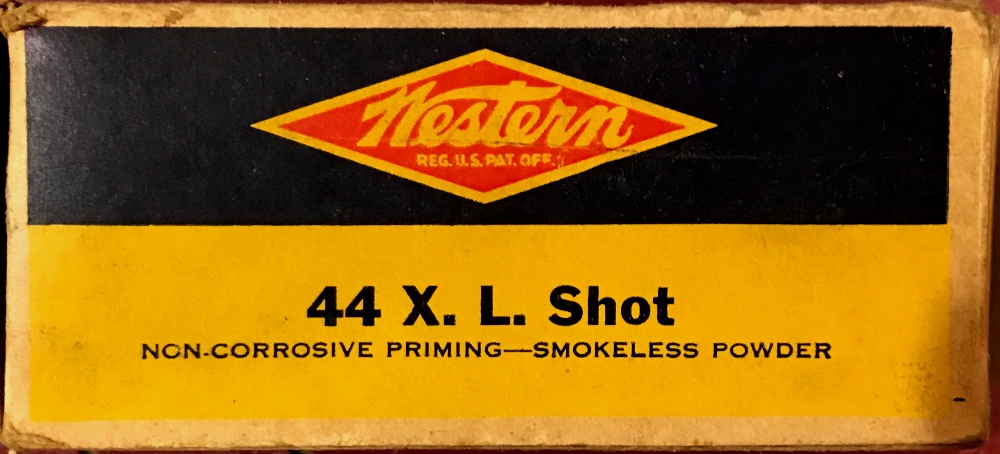 Company,
Division of Olin Industries, Inc.
Company,
Division of Olin Industries, Inc. 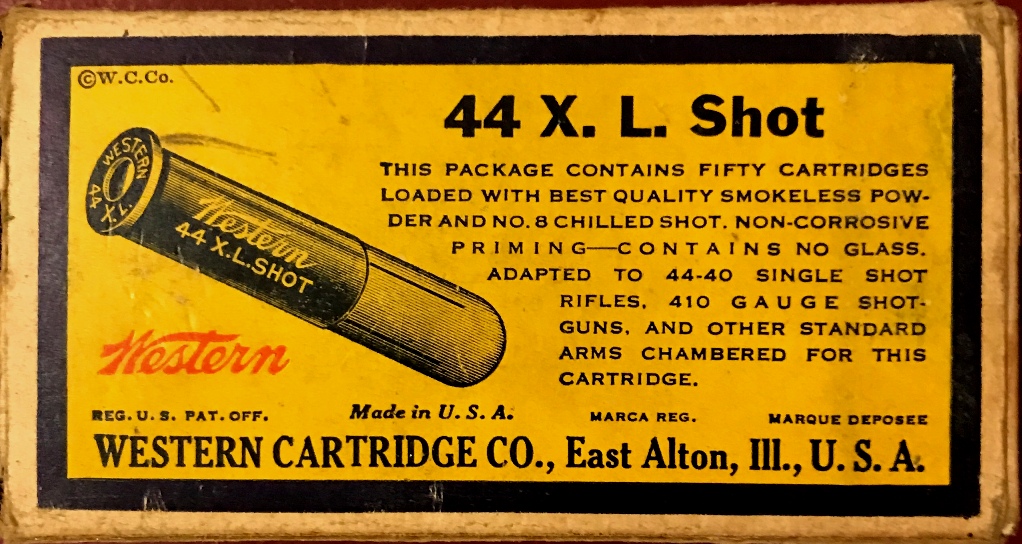
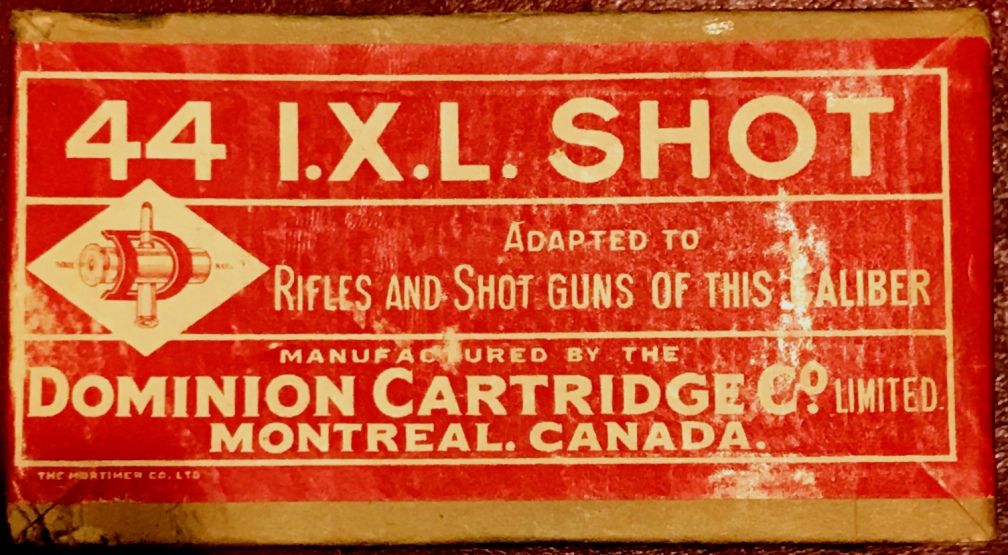
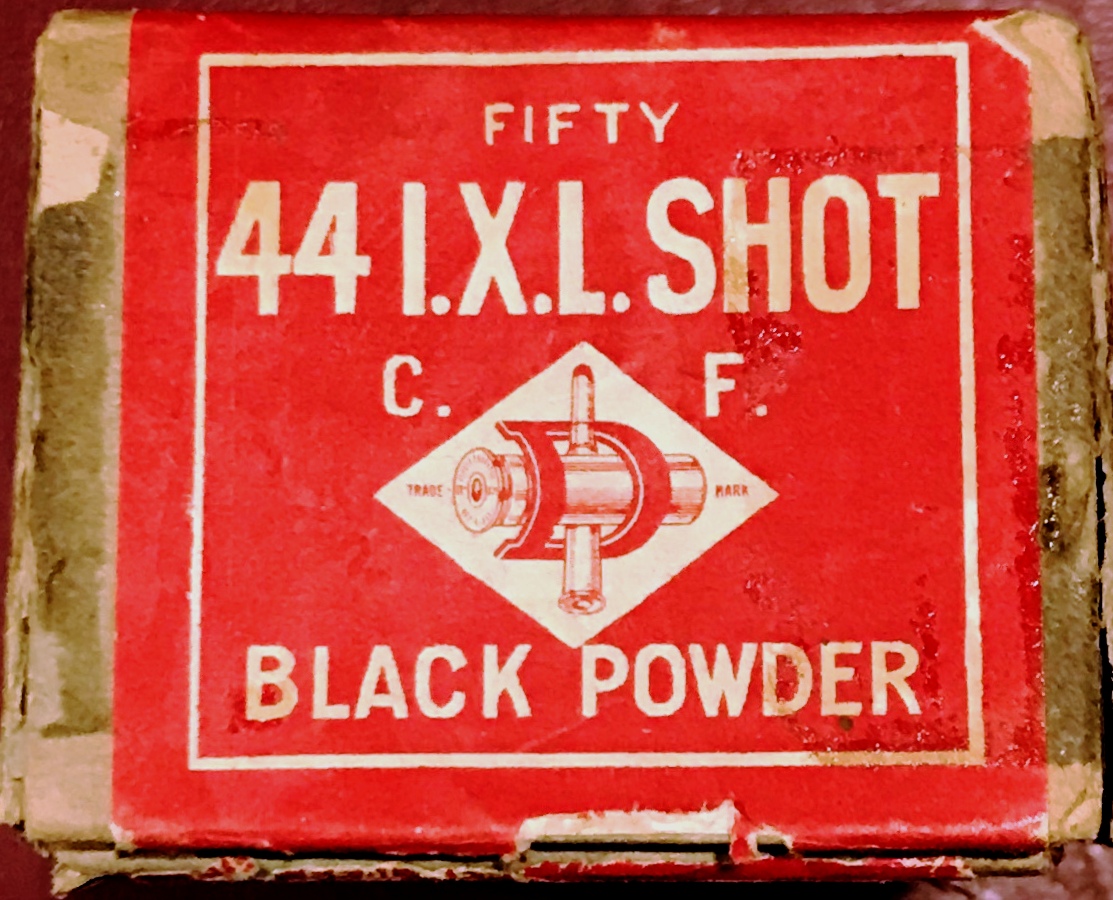
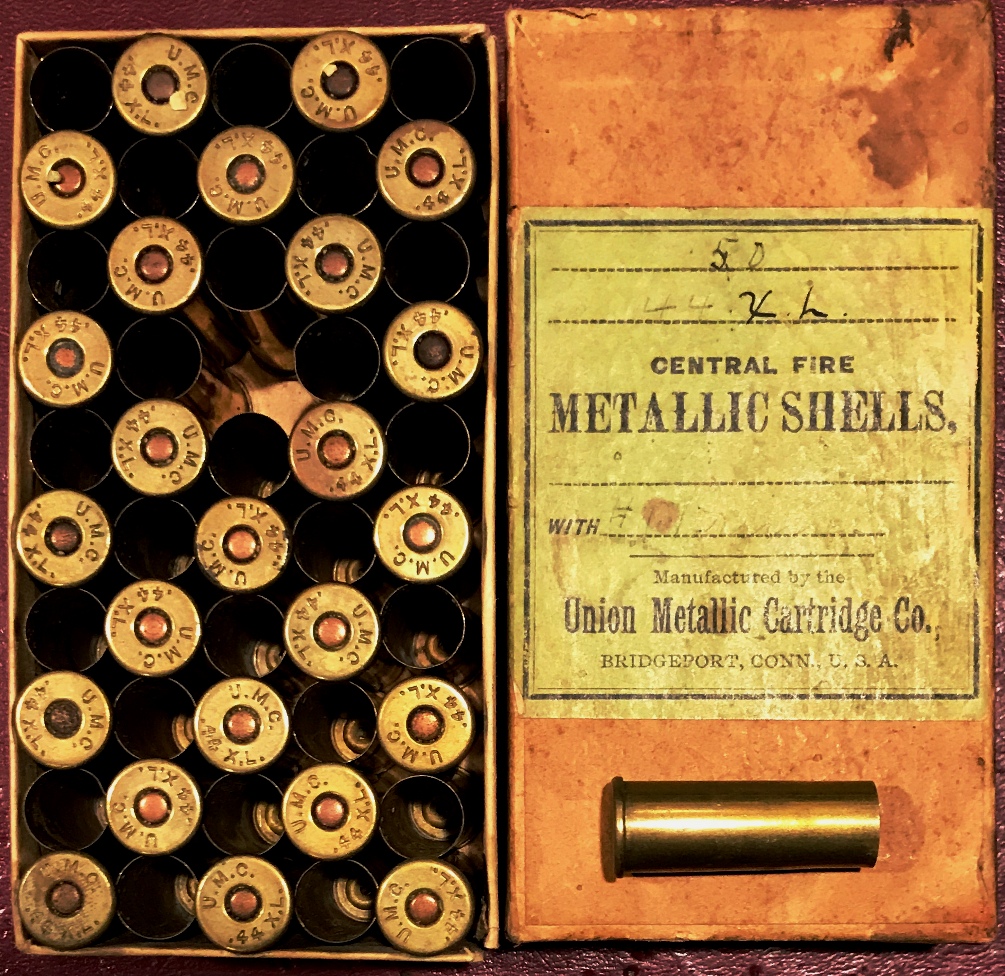
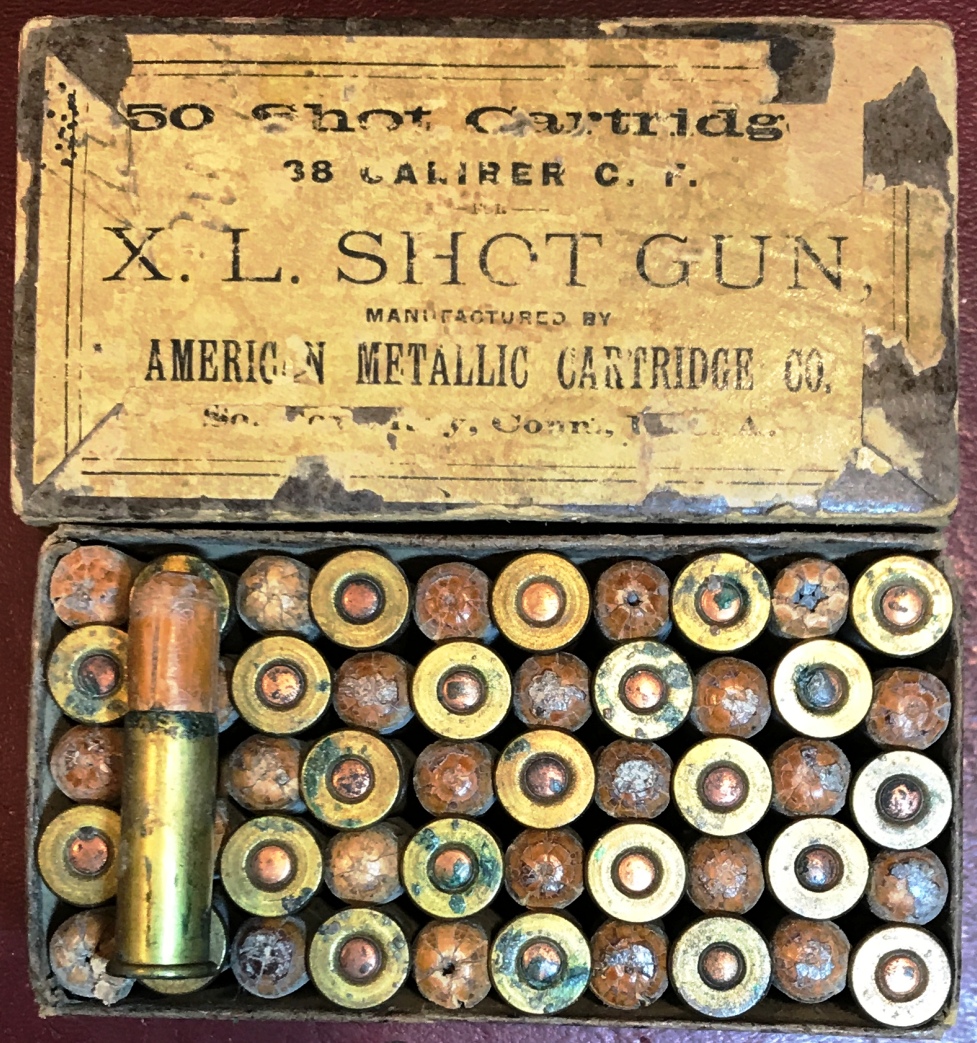
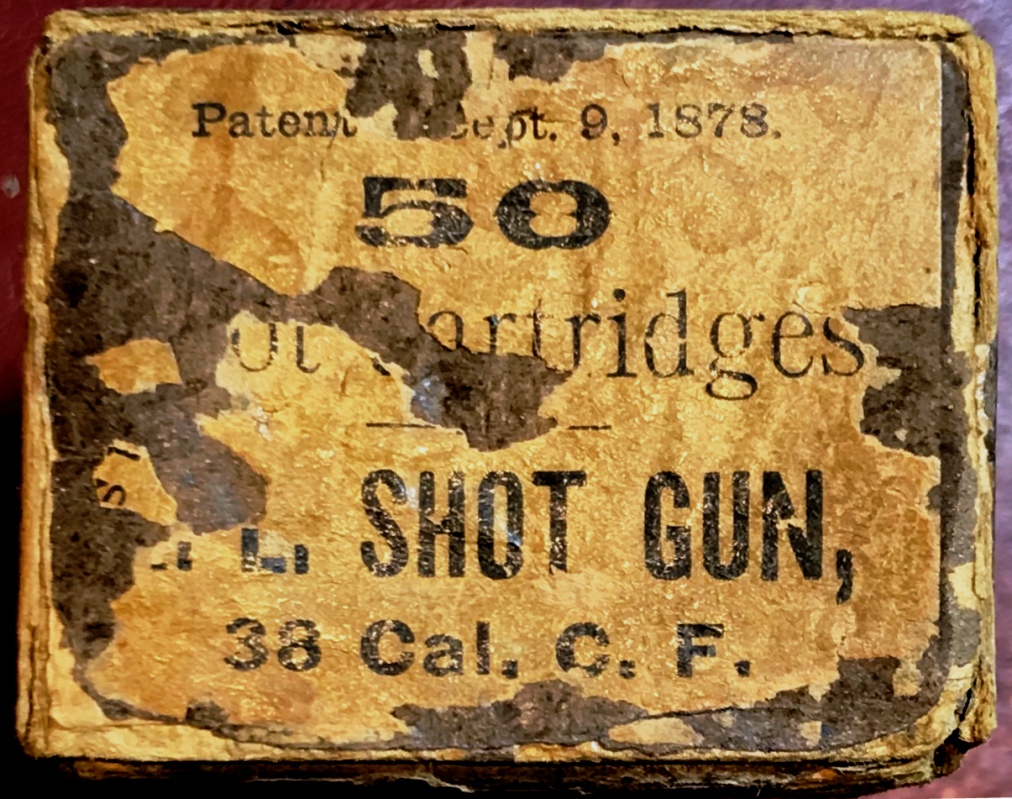 identity
of the 'already existing' cartridge case that was used for these .38 XL
cartridges. However, I'm pretty certain that all it is saying is that the
cartridges in the box are .38 caliber and they are center fire.
identity
of the 'already existing' cartridge case that was used for these .38 XL
cartridges. However, I'm pretty certain that all it is saying is that the
cartridges in the box are .38 caliber and they are center fire.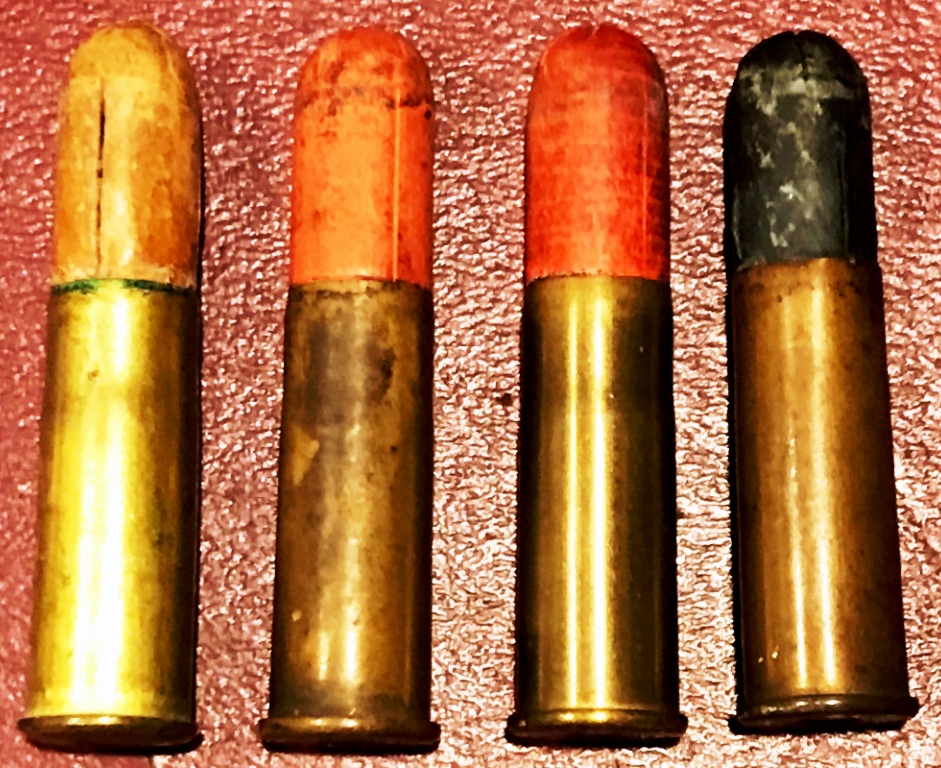
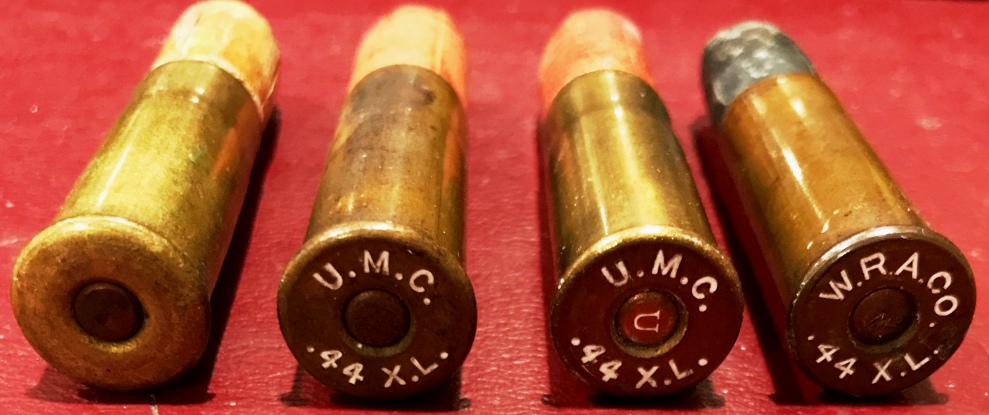 a
smokeless load. Likewise, a 'w' on the Winchester primer would have
identified it as a smokelesss load as well.
a
smokeless load. Likewise, a 'w' on the Winchester primer would have
identified it as a smokelesss load as well.